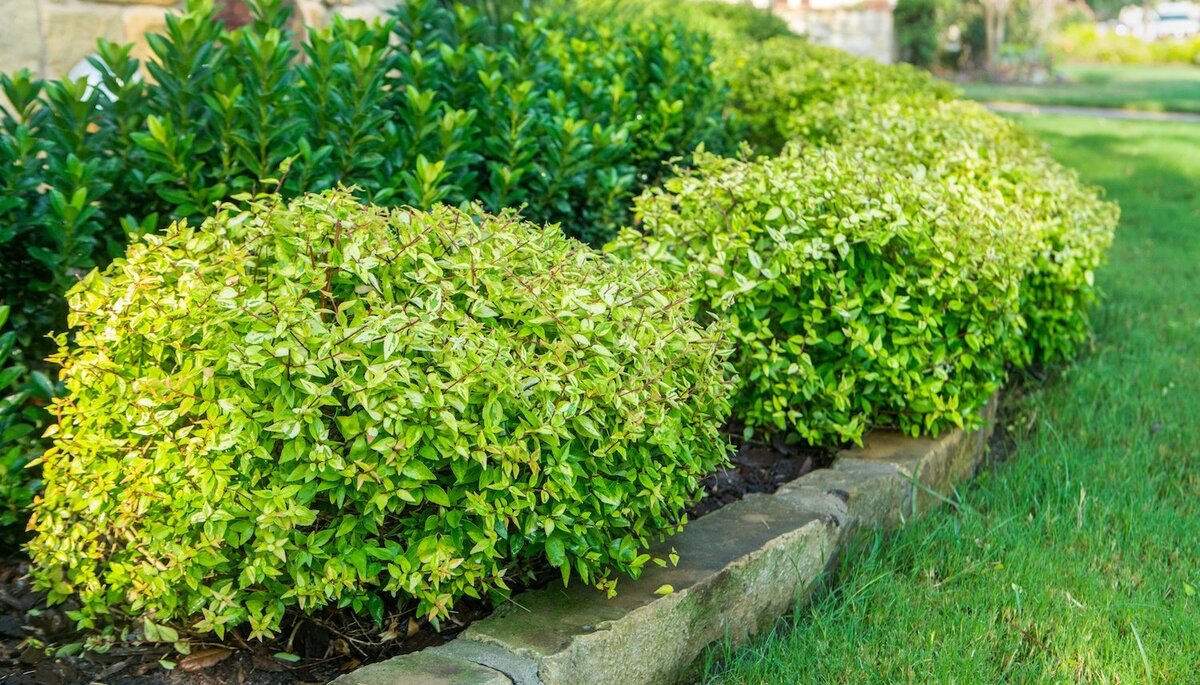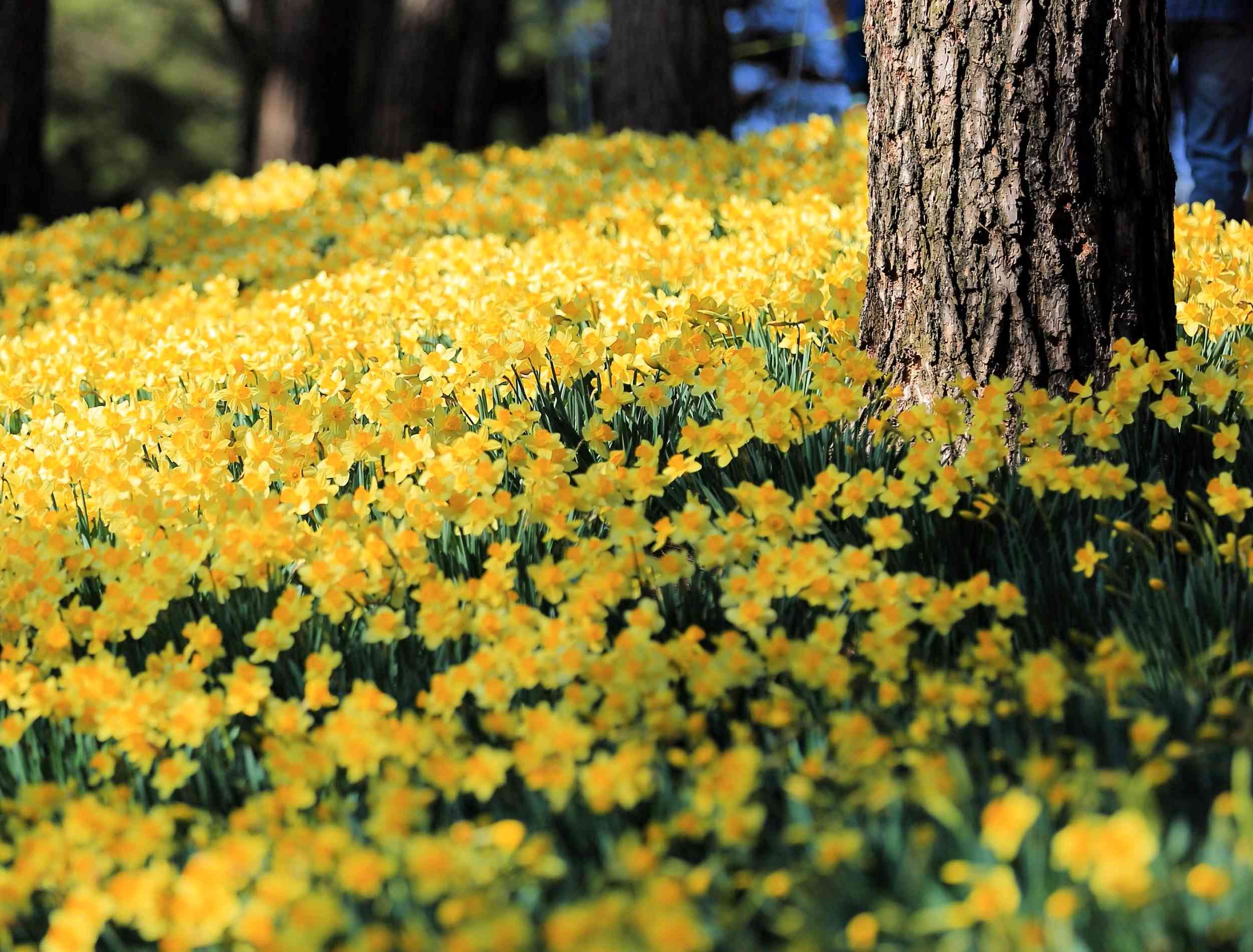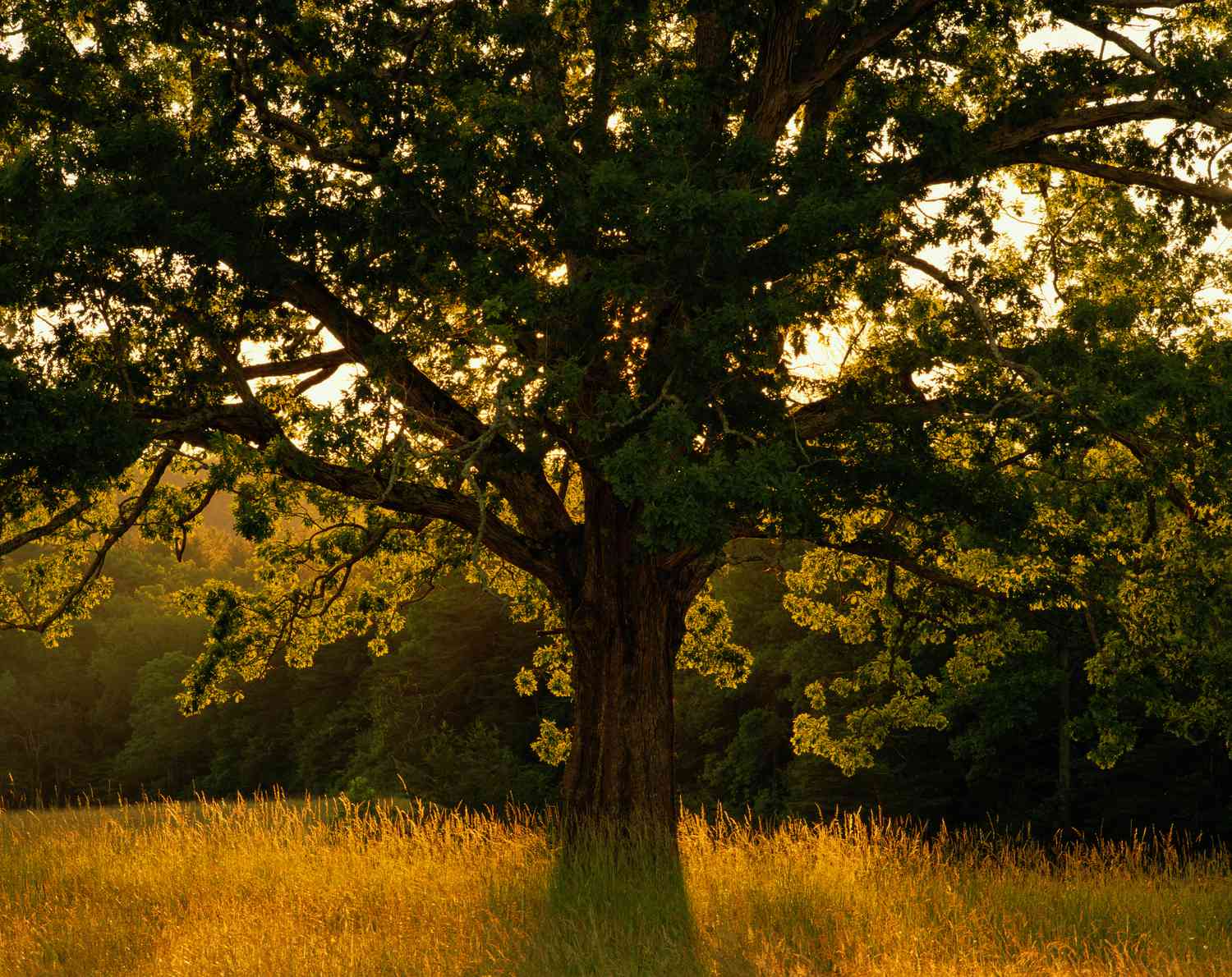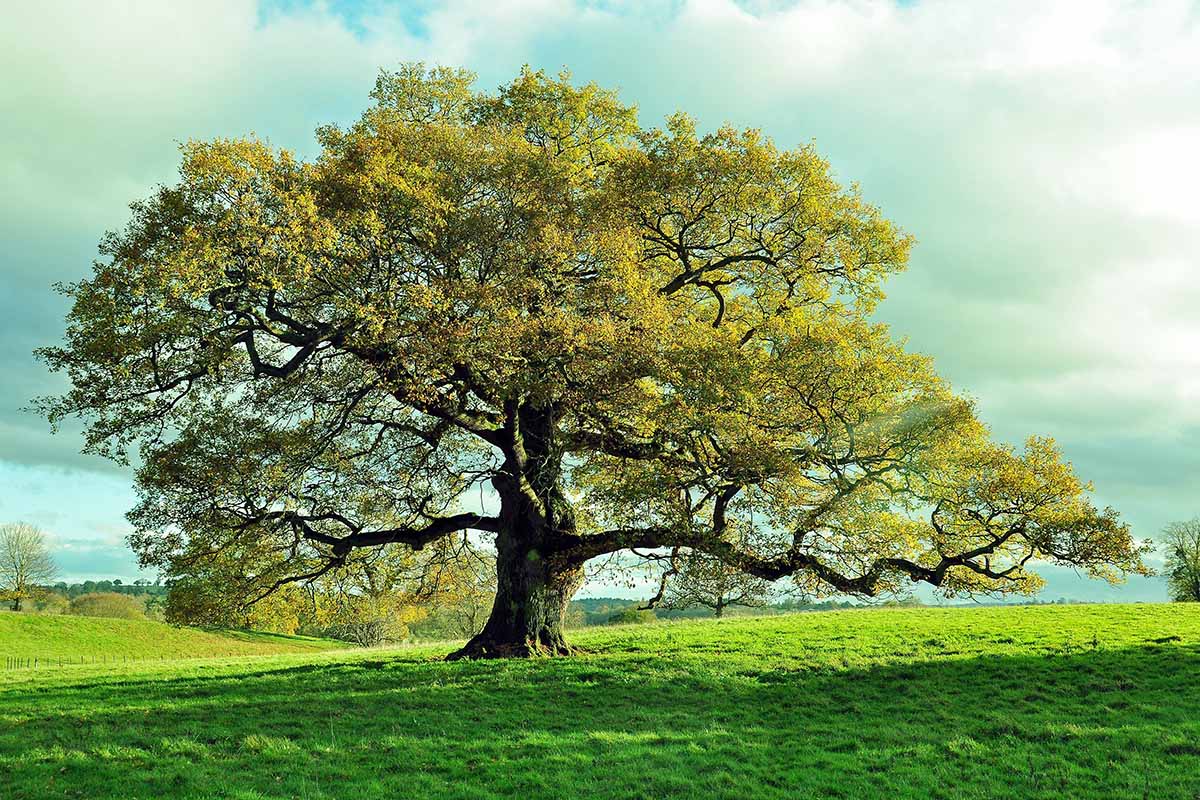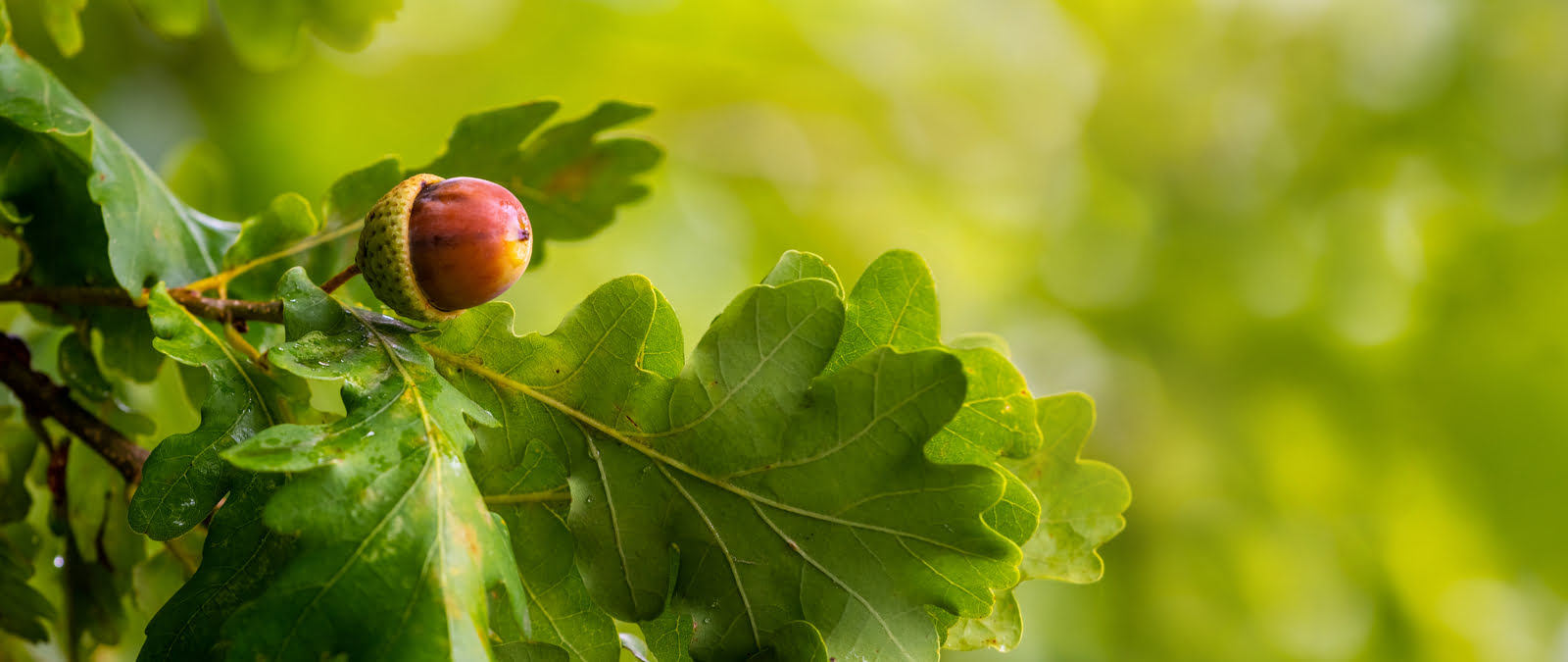Home>Types of Gardening>Ornamental Gardening>What To Plant Under Oak Trees In Texas
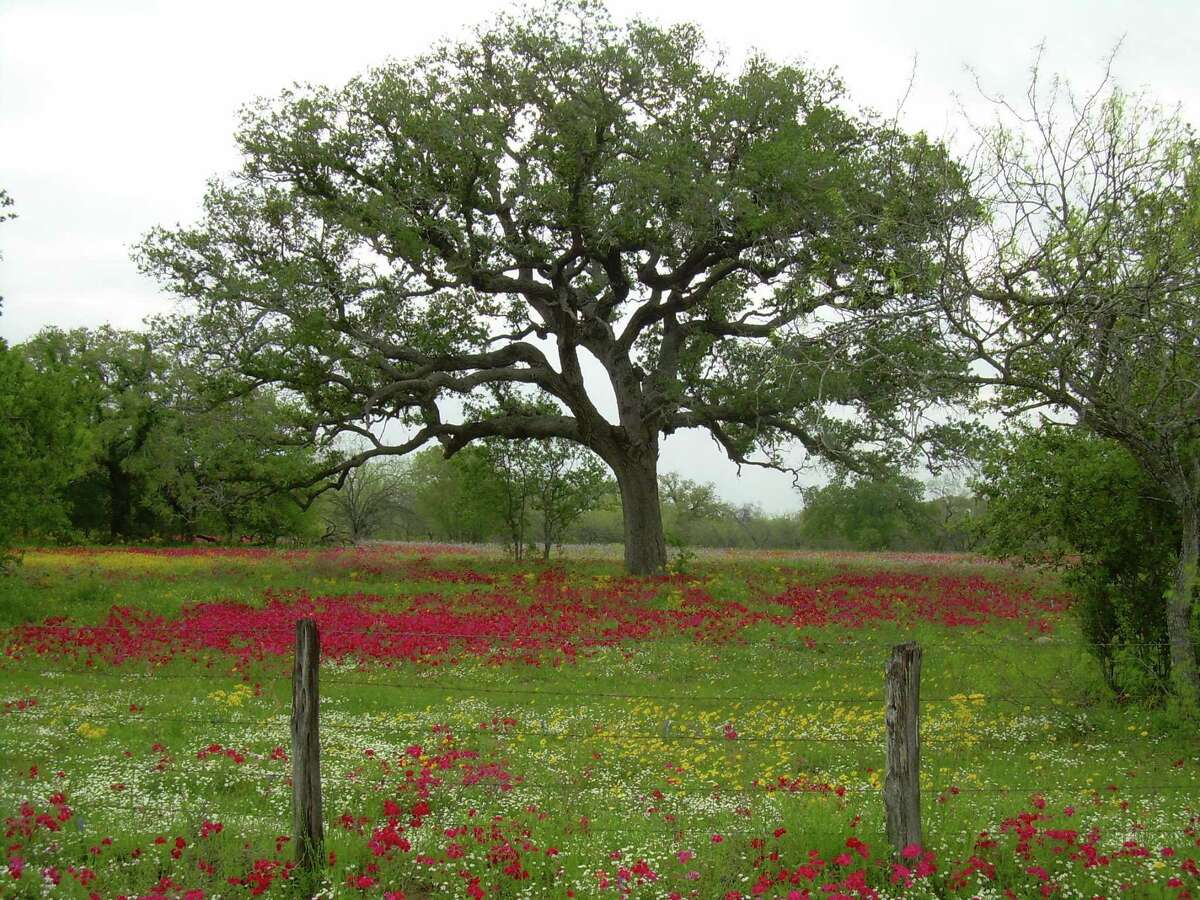

Ornamental Gardening
What To Plant Under Oak Trees In Texas
Modified: January 22, 2024
Discover the best plants for ornamental gardening under oak trees in Texas. Enhance your garden's beauty with these recommended varieties.
(Many of the links in this article redirect to a specific reviewed product. Your purchase of these products through affiliate links helps to generate commission for Chicagolandgardening.com, at no extra cost. Learn more)
Table of Contents
- Introduction
- Understanding Oak Trees in Texas
- Factors to Consider when Planting Under Oak Trees
- Native Plants that Thrive under Oak Trees in Texas
- Ornamental Plants that Can Be Planted Under Oak Trees in Texas
- Ground Cover Options for Planting Under Oak Trees in Texas
- Tips for Maintaining a Successful Understory Garden under Oak Trees in Texas
- Conclusion
Introduction
Welcome to the vibrant world of ornamental gardening! If you have a passion for creating aesthetically pleasing outdoor spaces and are looking to enhance the beauty of your garden, planting under oak trees in Texas can be a rewarding endeavor. Texas, known for its diverse climatic regions, offers unique challenges and opportunities for gardeners.
Oak trees are not only iconic symbols of strength and longevity but also provide shade and shelter for various plant species. However, planting under oak trees requires careful consideration due to the specific conditions created by the tree’s shade and root system. In this article, we will explore the intricacies of ornamental gardening under oak trees in Texas and provide you with valuable insights and tips to help you navigate this exciting endeavor.
Understanding the nature of oak trees is crucial in creating a successful understory garden. Oak trees are typically large and deciduous, shedding their leaves during the fall season. They have extensive root systems that can compete with other plants for nutrients and water. Furthermore, oak trees create a unique microclimate under their canopy, characterized by dappled shade, increased soil acidity, and dryness.
Due to these factors, it is essential to select plants that are adaptable to the specific conditions found under oak trees. Native plants are highly recommended as they have evolved to thrive in the local ecosystem. Ornamental plants can also be incorporated to add color, texture, and visual appeal to the understory garden.
Additionally, choosing appropriate ground covers can help suppress weeds, conserve moisture, and protect the delicate root systems of the oak trees. Maintaining a healthy understory garden under oak trees requires regular care, including monitoring the soil moisture, providing adequate nutrition, and pruning to ensure air circulation.
Join us as we delve into the fascinating world of ornamental gardening under oak trees in Texas. Discover the native and ornamental plants that can flourish in this unique environment and gain valuable insights into maintaining a successful understory garden. Let’s embark on this horticultural journey together to create a stunning and harmonious landscape beneath the majestic oak trees of Texas.
Understanding Oak Trees in Texas
In Texas, oak trees are not just a common sight; they are an integral part of the state’s landscape. With over 50 species of oak trees found in Texas, including the iconic Live Oak and the majestic Post Oak, these trees play a significant ecological and aesthetic role.
When planting under oak trees, it is important to understand their unique characteristics and the impact they have on the surrounding environment. Oak trees typically have deep root systems that extend far beyond the drip line of the tree canopy. These roots have a wide spread and can compete with other plants for water and nutrients.
Furthermore, oak trees provide shade, creating a dappled light effect on the ground below. This light pattern can influence the types of plants that thrive in the understory. The shade also contributes to changes in soil moisture levels and temperature, creating microclimates that certain species are better adapted to.
Another important consideration is the acidity of the soil beneath oak trees. Oak leaves contain tannins, which when decomposed, can increase the acidity of the soil. It is crucial to select plants that are tolerant of acidic soil conditions to ensure their success.
Lastly, oak trees are deciduous, which means they shed their leaves in the fall. This leaf litter can contribute to the organic matter in the soil as it decomposes. However, it is important to manage this leaf litter to prevent it from smothering other plants or creating a fire hazard.
By understanding these characteristics and the impact they have on the environment, you can make informed decisions when selecting plants and designing your understory garden under oak trees in Texas. Creating a harmonious and sustainable ecosystem that nurtures both the oak tree and the surrounding plants is key to a successful ornamental garden.
Factors to Consider when Planting Under Oak Trees
Planting under oak trees requires careful consideration of several factors to ensure the success and health of both the oak tree and the understory plants. By understanding these factors, you can make informed decisions and create a thriving and visually appealing garden.
1. Shade Intensity: Oak trees provide varying levels of shade, depending on their size and canopy density. Determine the amount of sunlight the area receives throughout the day and select plants accordingly. Shade-loving plants, such as ferns and hostas, thrive in areas with limited direct sunlight.
2. Soil Composition: Oak trees prefer well-draining soils with a slightly acidic pH level. Test the soil to determine its composition and adjust it if necessary. Adding organic matter, such as compost or peat moss, can help improve drainage and increase nutrient availability.
3. Root Competition: Oak trees have extensive root systems that compete with other plants for water and nutrients. Avoid planting shallow-rooted plants that may struggle to compete with the oak tree’s roots. Instead, select deep-rooted plants or those that are adaptable to root competition.
4. Leaf Litter: Oak trees shed their leaves in the fall, creating leaf litter that can smother other plants if left unchecked. Regularly remove excess leaf litter to allow light and airflow to reach the understory plants. Use the collected leaves as mulch or compost material.
5. Water Requirements: Oak trees, with their deep root systems, are drought-tolerant once established. However, the understory plants may have differing water requirements. Ensure that the plants you choose have similar water needs to avoid over or under watering.
6. Tree Health: Before planting under an oak tree, assess its overall health. Avoid planting under trees that show signs of disease or stress, as this can negatively impact the growth and vigor of the understory plants. If necessary, consult an arborist for professional advice.
By taking these factors into account, you can create a carefully planned garden that thrives under the shade and root competition of oak trees. With the right selection of plants and proper maintenance, you can transform the space beneath the oak tree into a lush and vibrant understory garden.
Native Plants that Thrive under Oak Trees in Texas
When planting under oak trees in Texas, incorporating native plants is a recommended strategy. Native plants have adapted to the specific climate, soil conditions, and insect pollinators in the region, making them well-suited for survival under the shade and root competition of oak trees. Here are some native plant options that thrive under oak trees in Texas:
1. Turk’s Cap (Malvaviscus arboreus var. drummondii)
This perennial plant features vibrant red flowers that attract hummingbirds. It can tolerate shade and dry conditions, making it an excellent choice for the understory of oak trees.
2. Texas Red Yucca (Hesperaloe parviflora)
This succulent plant produces tall spikes of red or coral-colored tubular flowers. It is drought-tolerant, low-maintenance, and can withstand the dappled shade created by oak tree canopies.
3. Inland Sea Oats (Chasmanthium latifolium)
This ornamental grass is known for its attractive seed heads that resemble flattened oats. It thrives in partial shade and is a great option for adding texture and movement to the understory garden.
4. Prairie Verbena (Glandularia bipinnatifida)
This groundcover plant produces clusters of purple flowers and has a spreading habit. It can tolerate both sun and shade, making it versatile for planting under oak trees.
5. Texas Lantana (Lantana urticoides)
This colorful flowering shrub attracts butterflies and thrives in full sun to part shade. It is drought-tolerant and can add a splash of vibrant colors to the understory garden.
6. American Beautyberry (Callicarpa americana)
This deciduous shrub produces clusters of bright purple berries that are attractive to birds. It can tolerate partial shade and provides a unique pop of color in the understory.
7. Gregg’s Mistflower (Conoclinium greggii)
This perennial plant features clusters of blue or purple flowers that attract butterflies. It thrives in shade or partial shade and is an excellent option for adding color to the understory garden.
By incorporating these native plants into your understory garden, you not only create a visually appealing landscape but also contribute to the preservation of Texas’ native plant species and their associated wildlife. Native plants are well-adapted to the local ecosystem and require less maintenance, making them a sustainable choice for planting under oak trees in Texas.
Ornamental Plants that Can Be Planted Under Oak Trees in Texas
In addition to native plants, incorporating ornamental plants can add color, texture, and visual interest to the understory garden under oak trees in Texas. These plants are specifically chosen for their decorative attributes and can complement the natural beauty of the oak tree. Here are some ornamental plants that thrive under oak trees in Texas:
1. Azaleas (Rhododendron spp.)
Azaleas are prized for their vibrant and showy blooms. They come in a variety of colors, including shades of pink, purple, and white. Select azalea varieties that are shade-tolerant and suitable for the local climate to ensure their success under oak trees.
2. Japanese Painted Fern (Athyrium niponicum var. pictum)
This fern has uniquely colored fronds with silvery-gray and burgundy hues. It thrives in shady conditions and adds an elegant touch to the understory garden. Pair it with other shade-loving plants for a lush and textured look.
3. Lenten Rose (Helleborus orientalis)
This perennial produces beautiful, bell-shaped flowers in various shades of pink, purple, or white. It tolerates shade well and blooms early in the spring, providing a burst of color to the garden.
4. Hostas (Hosta spp.)
Hostas are known for their lush foliage and come in a wide range of leaf shapes, sizes, and colors. They prefer shady conditions and can transform the understory garden with their varied textures and forms.
5. Bleeding Hearts (Dicentra spp.)
These delicate, heart-shaped flowers hang gracefully from arching stems. They prefer partial shade and produce blooms in shades of pink and white. Bleeding hearts add a touch of charm and whimsy to the understory garden.
6. Caladiums (Caladium spp.)
Caladiums are popular for their vibrant and colorful foliage. With their large, heart-shaped leaves in shades of red, pink, green, or white, they can brighten up the shaded areas under oak trees.
7. Foamflower (Tiarella spp.)
Foamflower is a perennial that produces delicate, frothy white or pink flowers. It prefers partial to full shade and is a great option for adding a delicate and airy feel to the understory garden.
When selecting ornamental plants, ensure they are suitable for the specific light and soil conditions beneath the oak trees. Consider the degree of shade, soil moisture levels, and temperature fluctuations that the plants will be exposed to. By carefully choosing ornamental plants that can thrive in these conditions, you can create a visually stunning understory garden that complements the majestic presence of the oak trees in Texas.
Ground Cover Options for Planting Under Oak Trees in Texas
When it comes to planting under oak trees in Texas, selecting suitable ground covers is essential. Ground covers not only provide a visually appealing carpet of foliage but also serve practical purposes, such as weed suppression, soil erosion prevention, and moisture retention. Here are some ground cover options that thrive under oak trees in Texas:
1. Asiatic Jasmine (Trachelospermum asiaticum)
Asiatic Jasmine is a popular ground cover that forms a dense, evergreen mat of glossy foliage. It tolerates shade well and is drought-tolerant once established. It spreads quickly and helps suppress weed growth.
2. Japanese Pachysandra (Pachysandra terminalis)
This low-growing evergreen ground cover provides a dense carpet of glossy green leaves. It thrives in shady conditions and spreads slowly to create an attractive underlayer beneath oak trees.
3. Carpet Bugleweed (Ajuga reptans)
Carpet Bugleweed is a hardy ground cover that offers a variety of foliage colors, including shades of green, purple, or bronze. It forms a dense mat that helps choke out weeds and can tolerate shade.
4. Liriope (Liriope spp.)
Liriope, also known as Lilyturf, is a versatile ground cover suitable for both sun and shade. It produces grass-like foliage and can even tolerate some foot traffic. Choose a variety, such as Big Blue Lilyturf (Liriope muscari), that will thrive in shady conditions.
5. Texas Frogfruit (Phyla nodiflora)
Native to Texas, Texas Frogfruit is a low-growing ground cover that features small, white flowers. It tolerates both sun and shade and can attract pollinators to the garden. It is also an excellent choice for providing habitat for beneficial insects.
6. Creeping Thyme (Thymus serpyllum)
Creeping Thyme is a fragrant evergreen ground cover that thrives in sunny to partially shaded areas. It forms a dense and fragrant carpet of small green leaves and produces tiny pink or purple flowers in the summer.
7. Purple Wintercreeper (Euonymus fortunei ‘Coloratus’)
Purple Wintercreeper is a low-growing evergreen shrub that functions well as a ground cover. It has glossy, dark purple foliage that adds a pop of color to the understory garden. It can tolerate shade but also thrives in partial sun.
When selecting ground covers, consider the specific soil conditions, moisture levels, and amount of shade that the area receives under the oak trees. Some ground covers may do better in areas with drier soil or more sunlight, while others excel in shadier and moister conditions. By choosing the right ground cover options for your specific site, you can create a beautiful and low-maintenance understory garden under oak trees in Texas.
Tips for Maintaining a Successful Understory Garden under Oak Trees in Texas
Maintaining a successful understory garden under oak trees in Texas requires ongoing care and attention. The unique conditions created by the shade and root competition of the oak trees can present challenges, but with proper maintenance, your garden can thrive. Here are some tips to help you maintain a vibrant and healthy understory garden:
1. Monitor Soil Moisture
Regularly check the moisture levels of the soil beneath the oak trees. While oak trees are drought-tolerant, the understory plants may have different water requirements. Ensure that the plants receive adequate moisture without overwatering, as this can lead to root rot and other issues.
2. Provide Adequate Nutrition
Soil that is rich in organic matter can help provide essential nutrition for the understory plants. Incorporate compost or well-composted organic matter into the soil to improve its fertility. Applying a balanced slow-release fertilizer can also ensure that the plants receive the necessary nutrients.
3. Mulch to Conserve Moisture
Apply a layer of organic mulch, such as wood chips or shredded bark, around the base of the plants. Mulch helps conserve soil moisture, suppress weeds, and regulate soil temperature. Avoid piling mulch against the trunk of the oak tree to prevent moisture retention and potential rot.
4. Prune for Air Circulation
Regularly prune the lower branches of the oak trees to allow for better airflow and light penetration. This helps reduce fungal diseases and promotes a healthier understory garden. However, avoid excessive pruning that may harm the overall health of the oak tree.
5. Manage Leaf Litter
Rake and remove excess leaf litter that accumulates under the oak trees. While some leaf litter can provide organic matter, an excessive build-up can smother the understory plants and create a fire hazard. Use collected leaves as mulch or add them to the compost pile.
6. Monitor for Pests and Diseases
Regularly inspect the plants for signs of pests or diseases. Early detection and proper treatment can prevent further damage and ensure the overall health of the understory garden. Use organic pest control methods whenever possible to minimize the impact on beneficial insects and wildlife.
7. Plan for Seasonal Changes
Consider the seasonal changes when designing your understory garden. Some plants may require more sunlight during certain times of the year, while others may benefit from increased shade during the hotter months. Incorporate a variety of plants with different bloom times and foliage colors to create year-round interest.
By following these tips, you can maintain a successful understory garden under oak trees in Texas. Regular monitoring, proper watering, adequate nutrition, and thoughtful maintenance practices will help ensure the health and longevity of both the oak trees and the understory plants, creating a vibrant and harmonious landscape.
Conclusion
Planting and maintaining an understory garden under oak trees in Texas can be a rewarding and fulfilling endeavor. By understanding the unique characteristics of oak trees, considering the specific conditions they create, and selecting appropriate plants, you can create a vibrant and thriving landscape.
Native plants that have adapted to the local environment are highly recommended, as they are well-suited to the shade, root competition, and soil conditions found under oak trees. Ornamental plants add an extra layer of beauty with their colorful blooms and foliage, enhancing the visual appeal of the understory garden.
Ground covers play a vital role in weed suppression, soil protection, and moisture retention. Selecting suitable ground covers ensures a healthy and low-maintenance garden beneath the oak trees. Additionally, regular maintenance practices such as monitoring soil moisture, providing adequate nutrition, pruning for air circulation, and managing leaf litter are essential for the well-being of the plants and the oak trees themselves.
By carefully considering these factors and implementing proper maintenance techniques, you can create a successful and thriving understory garden under oak trees in Texas. The result will be an enchanting and harmonious landscape where the majestic presence of the oak trees is complemented by a tapestry of native and ornamental plants.
So, roll up your sleeves, gather your gardening tools, and embark on the journey of creating your own stunning understory garden under the beautiful oak trees of Texas. Let nature’s ingenuity inspire your creativity as you bring this unique and awe-inspiring vision to life.
